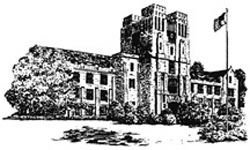|
|
|
Managing our own affairs: Is it time for charter public universities? by Charles Steger '69
|
 |
The issue of funding higher education in our nation is no mere academic argument. The stakes are huge for the next generation of students, for businesses and markets that rely on new knowledge and trained workers, for our nation's industrial competitiveness, and, indeed, for our quality of life. For too many years, Americans have benefited from the investments of previous generations. Today, our nation appears reluctant to reinvest in various public goods, whether it be public infrastructure, transportation, the environment, or education. In the Commonwealth of Virginia, we have been unable to find the balance between public needs and the ability or desire to assess ourselves. As a result, we continue to underfund such public responsibilities as higher education. |
Recognizing the political difficulties within Virginia and the unlikelihood that we will see restoration of lost funding anytime soon, three universities have proposed a novel solution: If the state cannot fund us, we ask for the flexibility to manage ourselves.
To counter the impact of budget cuts and address chronic underfunding--both of which have resulted in fewer teachers, larger classes, and fewer course offerings--Virginia Tech, the University of Virginia, and the College of William and Mary put forth the University Restructuring Initiative during the 2004 Virginia General Assembly legislative session. The initiative proposes that each institution be given increased authority and management flexibility for operations, including the capacity to set tuition rates that are reflective of the state-determined "cost to educate" and the market of peer universities.
According to a number of studies, including several conducted by the General Assembly, Virginia's higher-education system is chronically underfunded by about $400 million annually. Virginia Tech's share is about $40 million--more than the operating budget of our College of Engineering. In addition, tuition was constrained--either frozen or reduced--by the legislature for seven years. In effect, we underpriced the product at the expense of quality and service. Today, Virginia Tech has the lowest overall tuition of the 15 public colleges and universities in Virginia, and the lowest of all 23 of our public peer universities throughout the nation. By any measure, we are a great bargain--but a deal that seems too good to be true usually is. With state support at record lows, tuition rates must be raised. (Although, with our relative tuition rank, we will continue to offer great value.) Individual schools are in the best position to determine the costs and reinvest those funds into programs that will directly serve students. In return, because of the cost savings anticipated from the new structure, the three universities are willing to accept a smaller share of future higher-education funds from the commonwealth. The legislation was introduced in the General Assembly this year but will be carried over for final consideration in next year's session. A committee has been proposed to evaluate the plan. The three universities will begin extensive legislative and administrative reviews to further vet the details for legislators and government administrators. Under the new relationship, the universities would remain public institutions with boards of visitors appointed by the governor, confirmed by the General Assembly, and accountable to the commonwealth. The state would continue to have oversight responsibilities. We believe our approach is positive for the state, the schools, and our students. It would enable us to use our own resources to solve persistent funding shortfalls. New financial resources can be applied to hire additional faculty or address long-standing salary inequities and deficient operating budgets. Students will benefit from the ensuing protection of quality programming, retention of talented faculty, increased course offerings, and reduced class size.We simply must continue seeking creative means to fund state colleges and universities and to maintain the quality that you, our students, our customers, and our citizens expect.